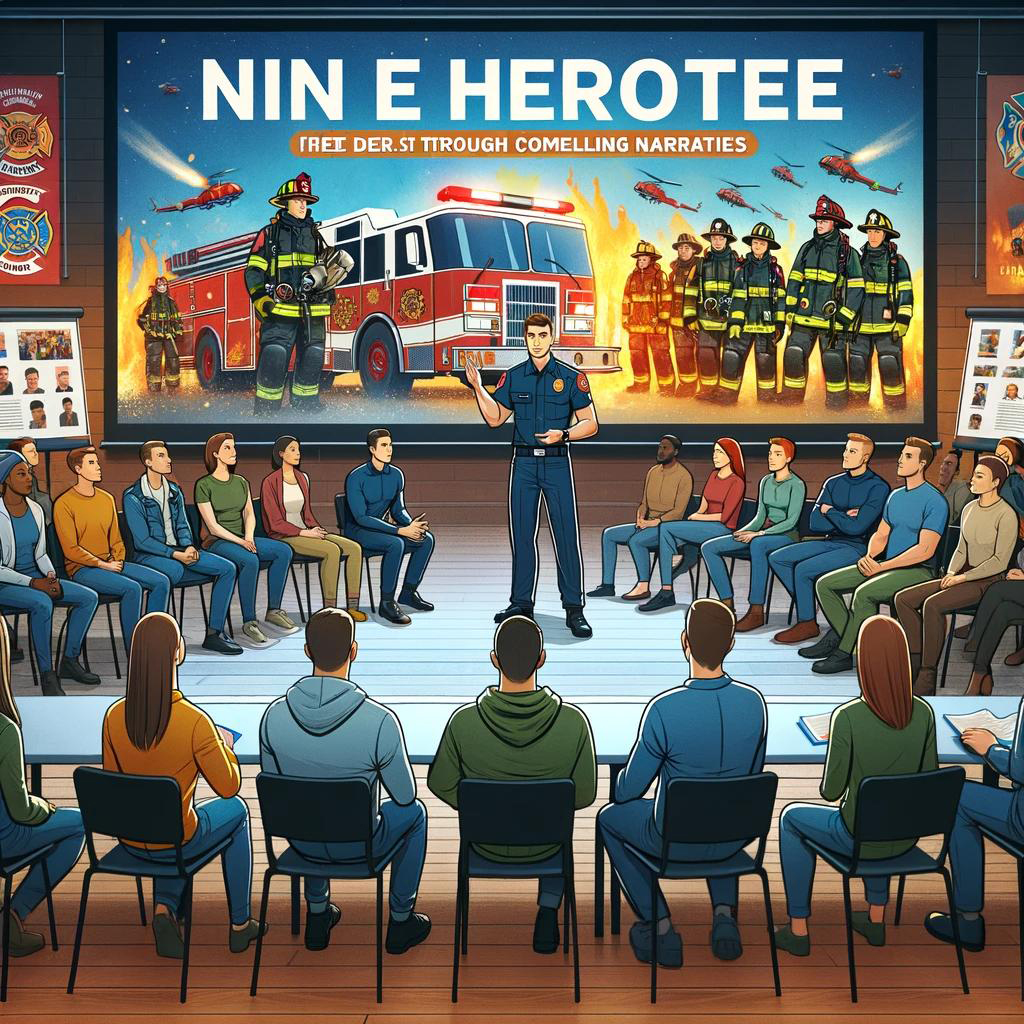Building Trust and Authenticity: The Foundation of Fire Department Recruiting
In the competitive landscape of fire department recruiting, building trust and authenticity is essential for attracting top talent and fostering long-term relationships with prospective recruits. Trust and authenticity serve as the cornerstone of successful recruitment efforts, offering a solid foundation upon which to establish meaningful connections and convey the values, culture, and opportunities of the fire service. In this blog post, we delve into the importance of building trust and authenticity in fire department recruiting and explore strategies for cultivating genuine relationships with aspiring firefighters.
The Significance of Trust and Authenticity:
Trust and authenticity are critical elements in any recruitment process, but they hold particular importance in the context of the fire service. Aspiring firefighters are drawn to organizations that they can trust and believe in, where they feel valued, respected, and supported in their career aspirations. Building trust and authenticity is not just about selling a job; it’s about creating a genuine connection and instilling confidence in the organization and its mission.
Trust and authenticity matter for several reasons:
- Establishing Credibility: Trust and authenticity are key drivers of credibility. Prospective recruits are more likely to engage with organizations that they perceive as trustworthy and authentic, where they feel confident in the organization’s ability to deliver on its promises and support their career development.
- Fostering Engagement: Building trust and authenticity fosters engagement and buy-in from prospective recruits. When recruits feel valued, heard, and respected throughout the recruitment process, they are more likely to invest time and energy in exploring career opportunities with the organization and ultimately join the team.
- Strengthening Retention: Trust and authenticity are essential for fostering long-term relationships with recruits and promoting retention. When recruits feel a sense of trust and belonging within the organization, they are more likely to remain committed and engaged over the long term, reducing turnover and enhancing organizational stability.
- Enhancing Reputation: Trust and authenticity are critical for shaping the organization’s reputation and brand perception. Positive experiences with recruitment processes can lead to word-of-mouth referrals and positive reviews, enhancing the organization’s reputation as an employer of choice and attracting top talent.
Strategies for Building Trust and Authenticity:
Building trust and authenticity requires a deliberate and consistent effort. Here are several strategies for cultivating trust and authenticity in fire department recruiting:
- Transparency and Open Communication: Foster transparency and open communication throughout the recruitment process. Provide clear and honest information about job expectations, requirements, and opportunities for advancement. Address questions, concerns, and feedback openly and promptly, demonstrating a commitment to transparency and accountability.
- Showcase Real Stories and Testimonials: Share real stories and testimonials from current firefighters, highlighting their experiences, perspectives, and motivations for joining the department. Authentic storytelling humanizes the recruitment process, offering prospective recruits a glimpse into the lives of firefighters and the impact they make on their communities.
- Demonstrate Commitment to Diversity and Inclusion: Emphasize the organization’s commitment to diversity and inclusion in recruitment messaging and practices. Showcase efforts to create a welcoming and inclusive environment where individuals from all backgrounds and identities are valued and respected. Actively seek out diverse perspectives and experiences to enrich the recruitment process and promote inclusivity.
- Provide Opportunities for Engagement and Interaction: Offer opportunities for prospective recruits to engage with current firefighters and learn more about the organization firsthand. Host recruitment events, open houses, and informational sessions where recruits can meet firefighters, ask questions, and experience the culture and atmosphere of the department. Facilitate mentorship and networking opportunities to foster connections and build relationships.
- Deliver on Promises and Commitments: Follow through on promises and commitments made during the recruitment process. Ensure that recruits receive timely and accurate information, support, and guidance at every stage of their journey. Demonstrate a commitment to their success and well-being, providing resources and opportunities for professional development and advancement.
Case Study: Building Trust and Authenticity
Let’s explore a hypothetical case study to illustrate the importance of building trust and authenticity in fire department recruiting:
Scenario: A fire department is seeking to attract recruits from diverse backgrounds and experiences.
Strategies:
- Emphasize the organization’s commitment to diversity and inclusion in recruitment messaging and practices.
- Share real stories and testimonials from diverse firefighters, highlighting their experiences and contributions.
- Host recruitment events and informational sessions focused on diversity and inclusion, providing opportunities for engagement and dialogue.
- Facilitate mentorship and networking opportunities for diverse recruits, connecting them with mentors and support networks within the department.
- Provide ongoing support and resources to ensure the success and retention of diverse recruits, addressing any barriers or challenges they may encounter.
Results:
- Increased engagement and interest from recruits from diverse backgrounds.
- Enhanced reputation and brand perception as an inclusive and welcoming employer.
- Strengthened relationships and trust with recruits and the broader community.
Building trust and authenticity is essential for successful fire department recruiting. By fostering transparency, showcasing real stories, demonstrating commitment to diversity and inclusion, providing opportunities for engagement, and delivering on promises, fire departments can cultivate genuine relationships with prospective recruits and inspire them to pursue a career in firefighting.
Trust and authenticity are not just buzzwords; they are the foundation upon which successful recruitment efforts are built. By prioritizing trust and authenticity in recruitment practices, fire departments can attract top talent, foster long-term relationships, and build a stronger, more resilient workforce for the future.
Together, let’s commit to building trust and authenticity in fire department recruiting, ensuring that aspiring firefighters feel valued, respected, and supported in their journey to serve their communities and make a difference in the world.










